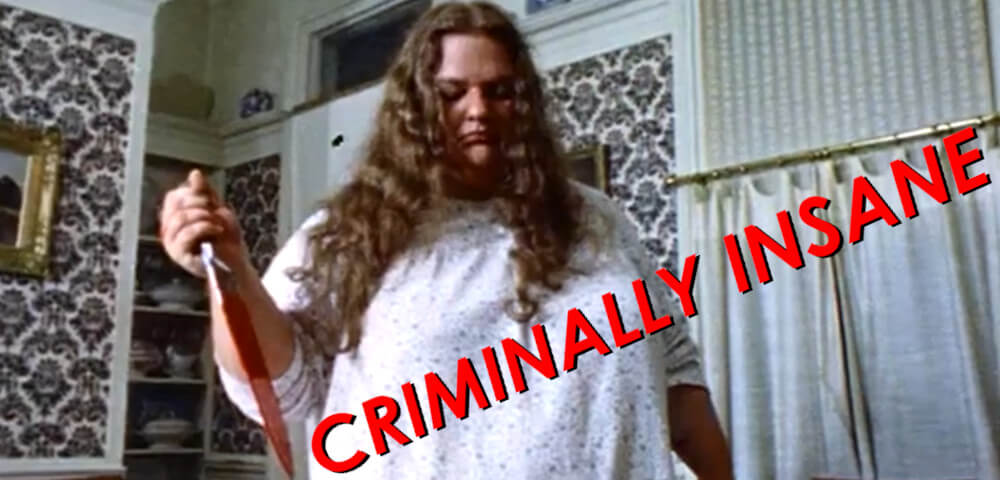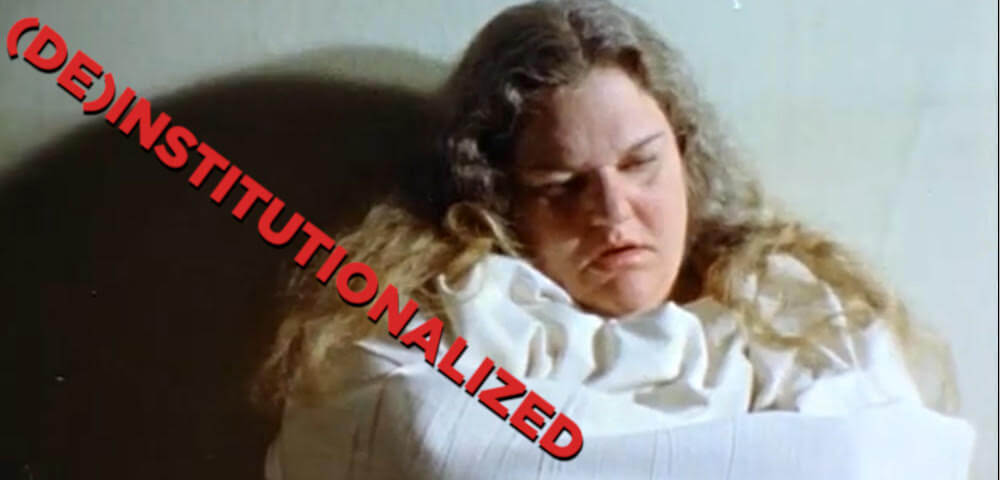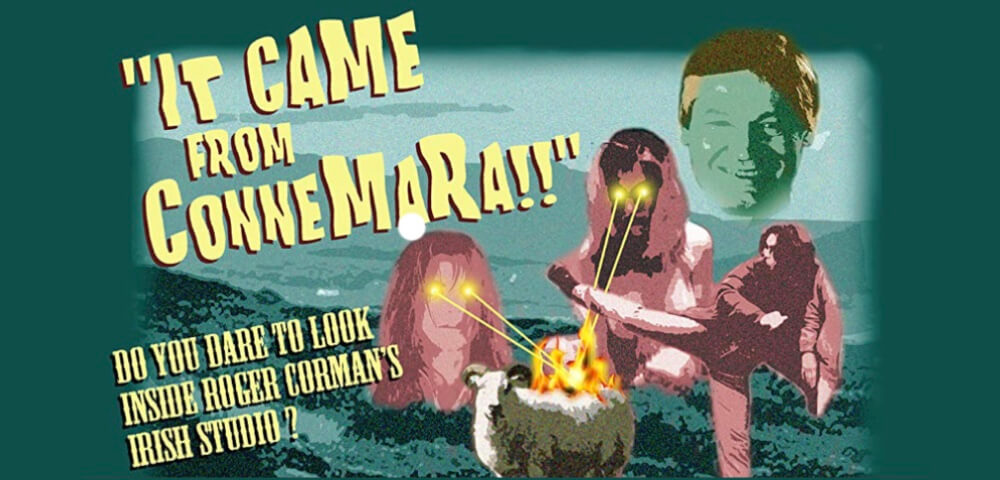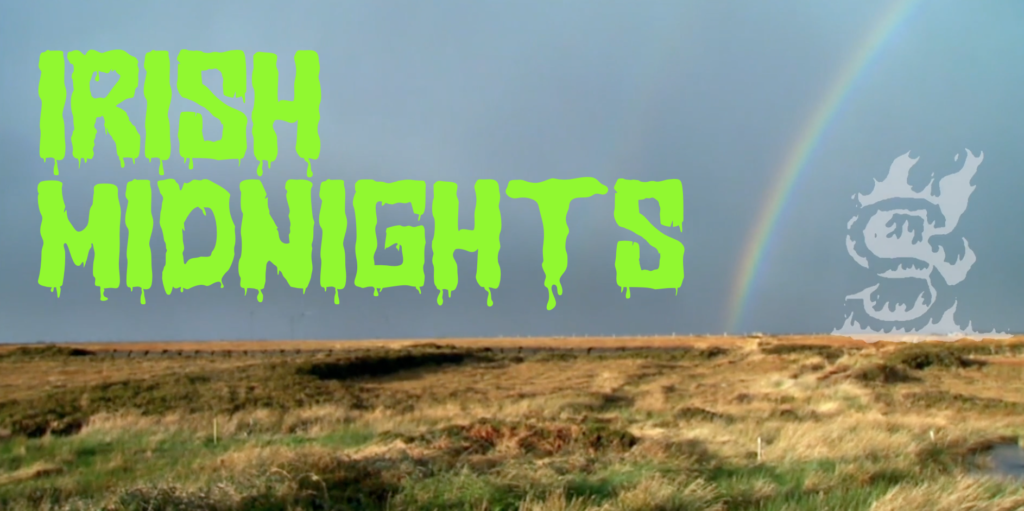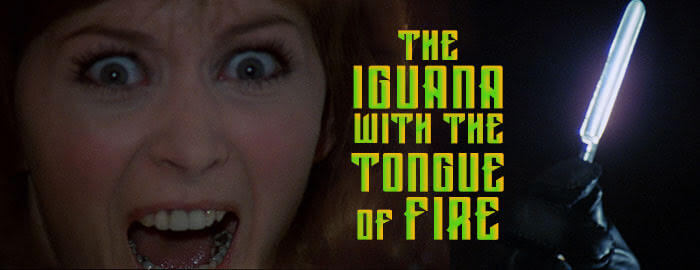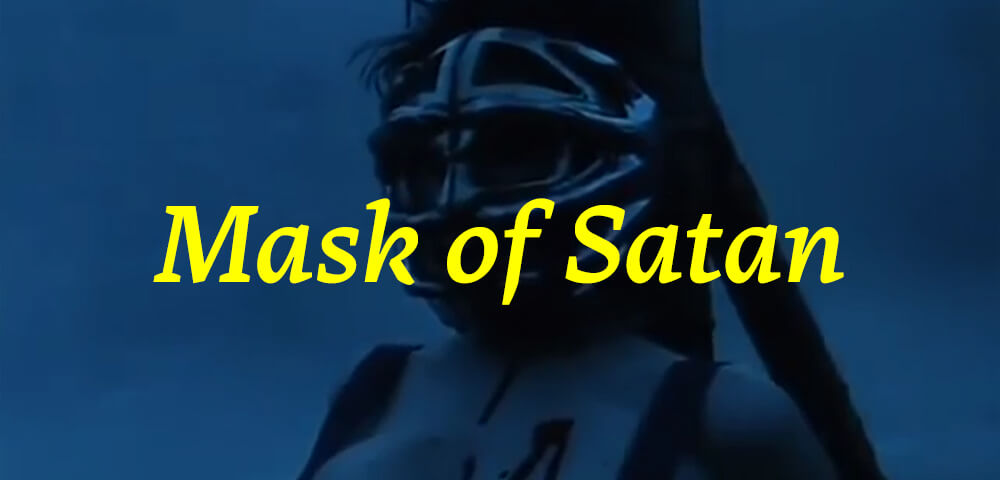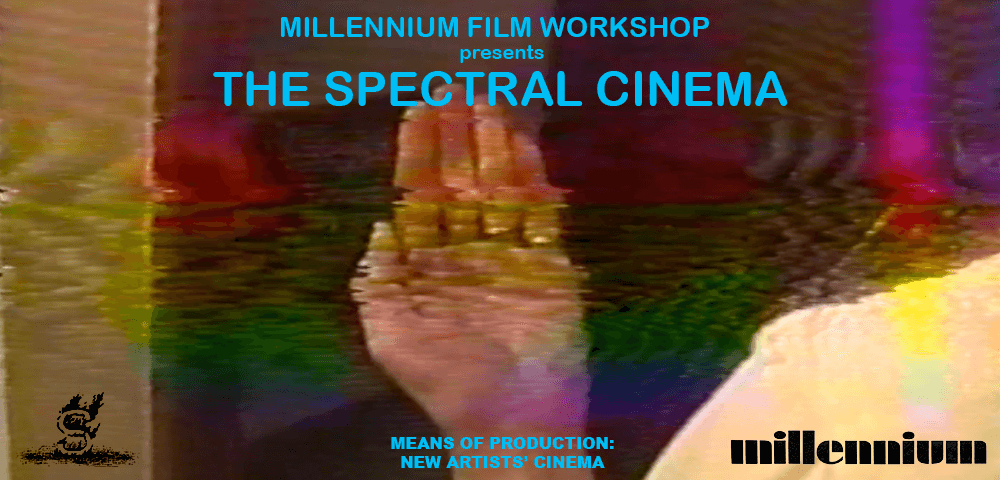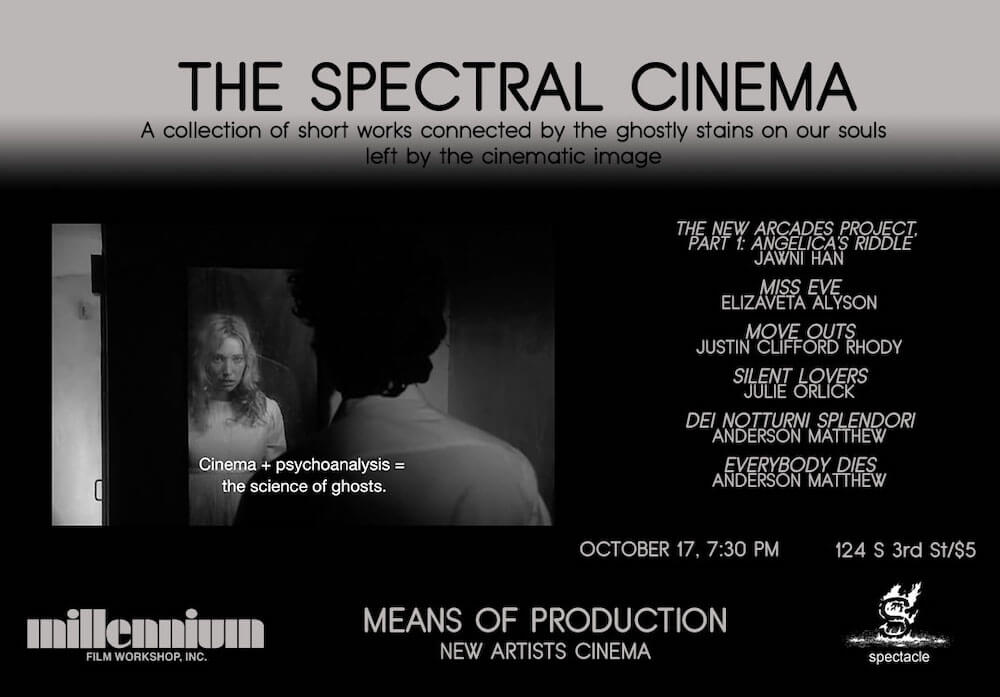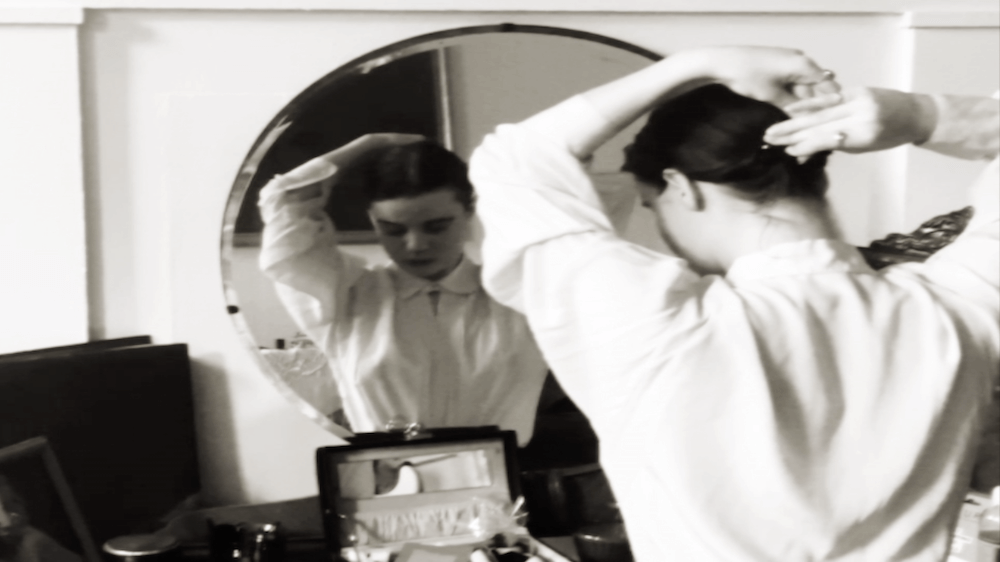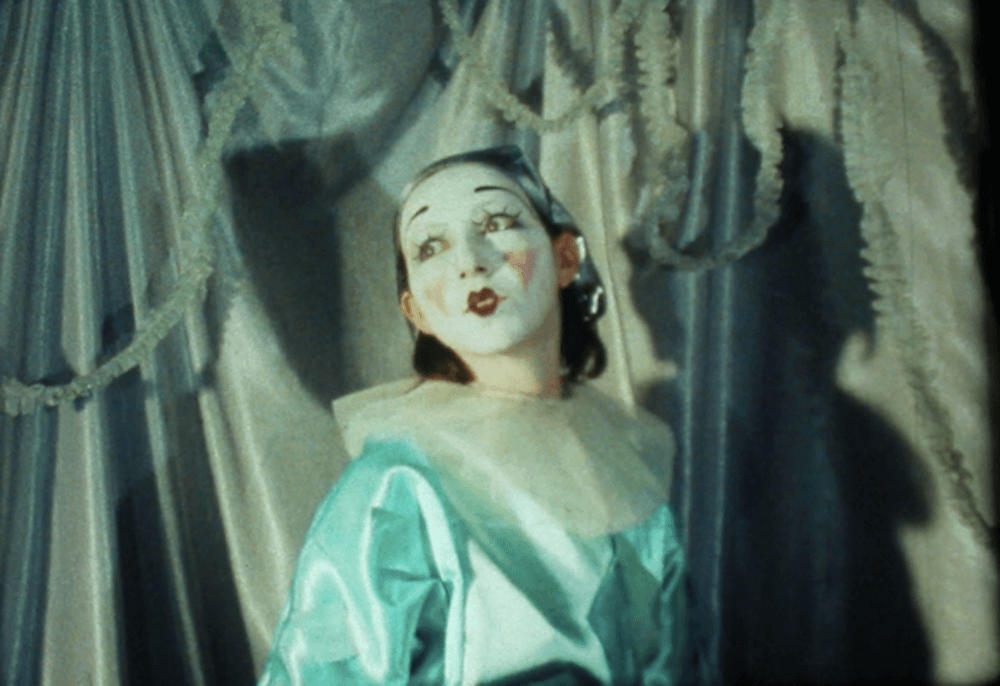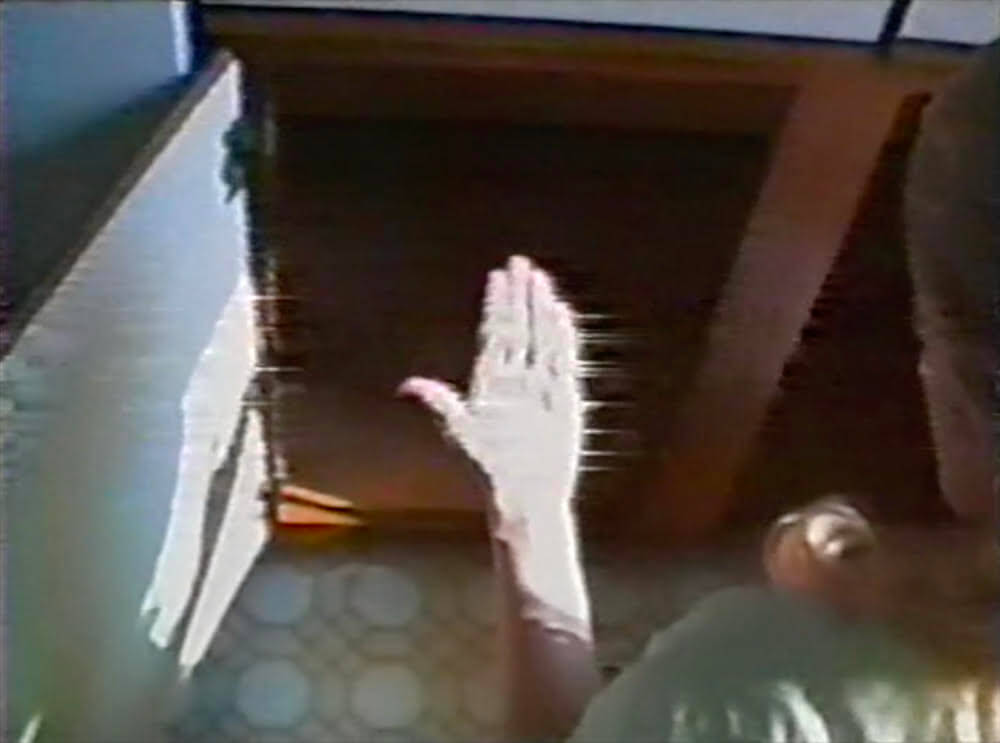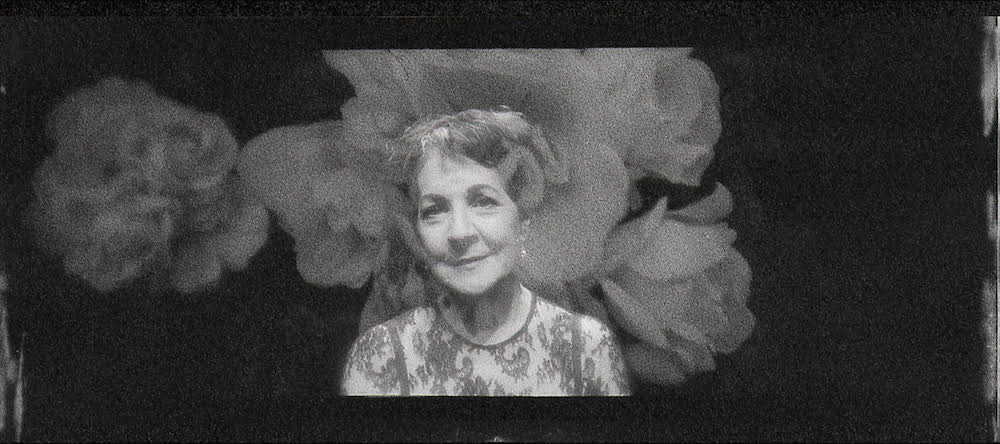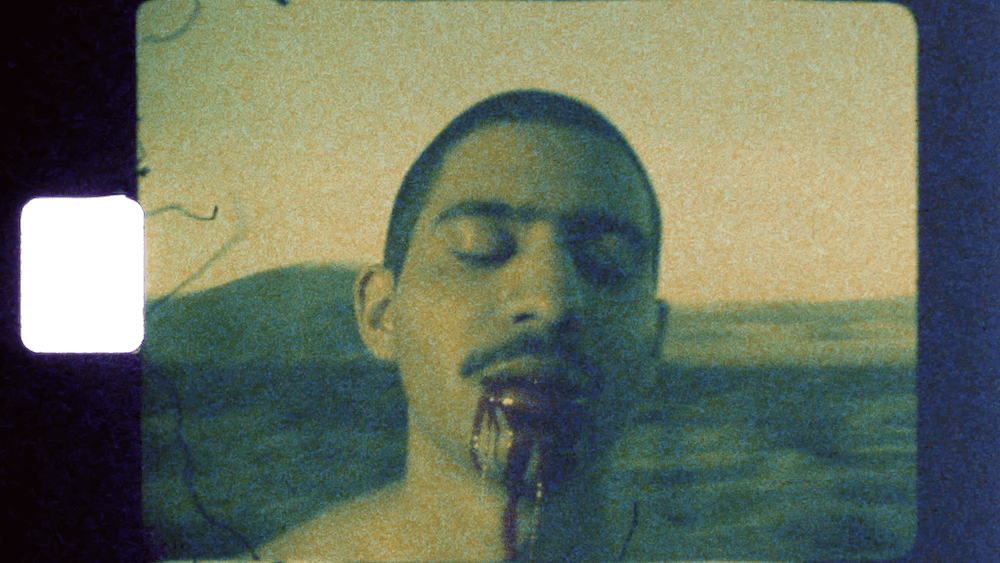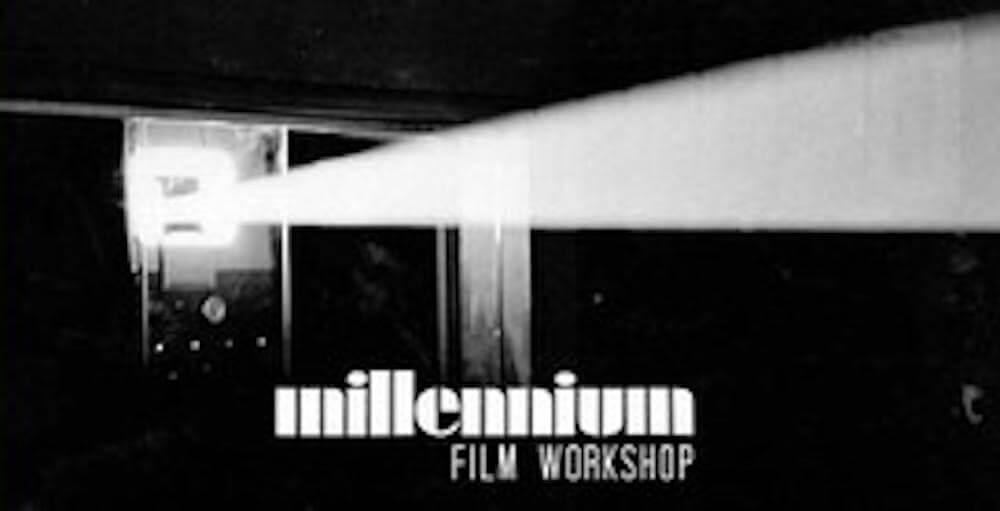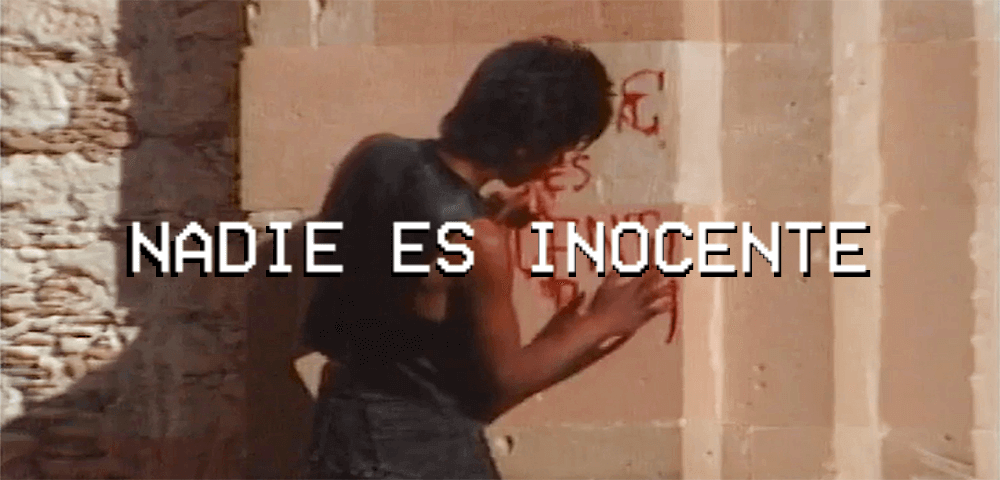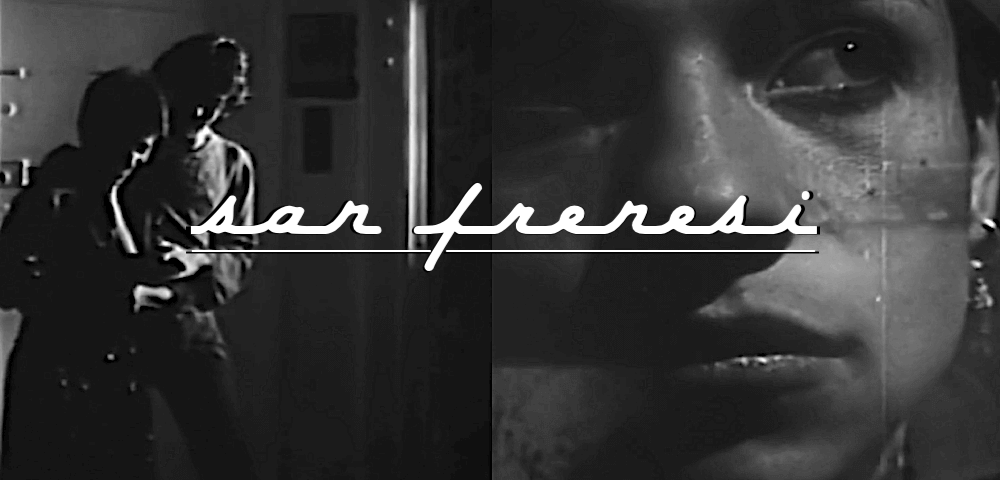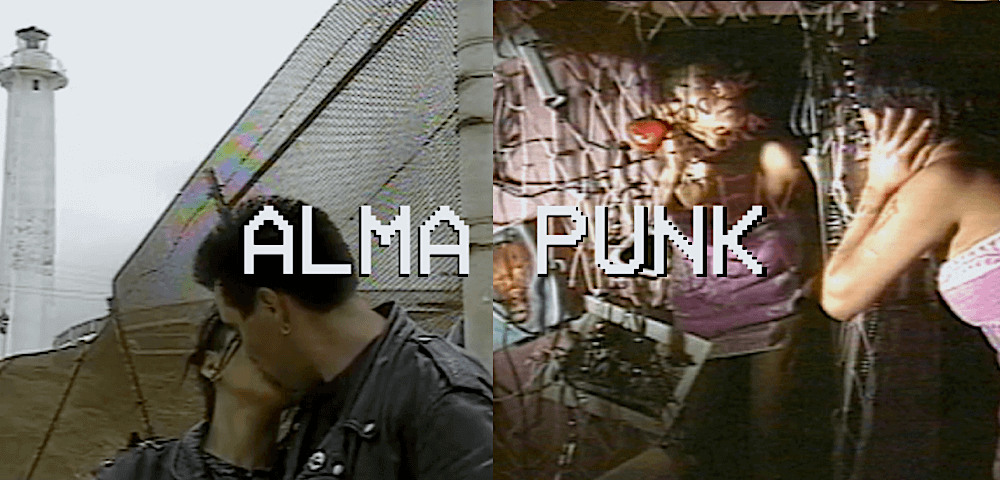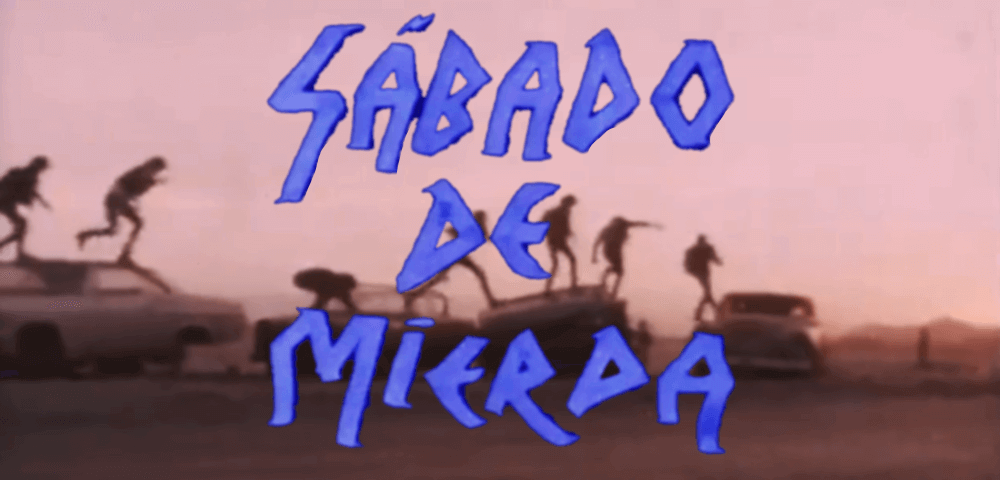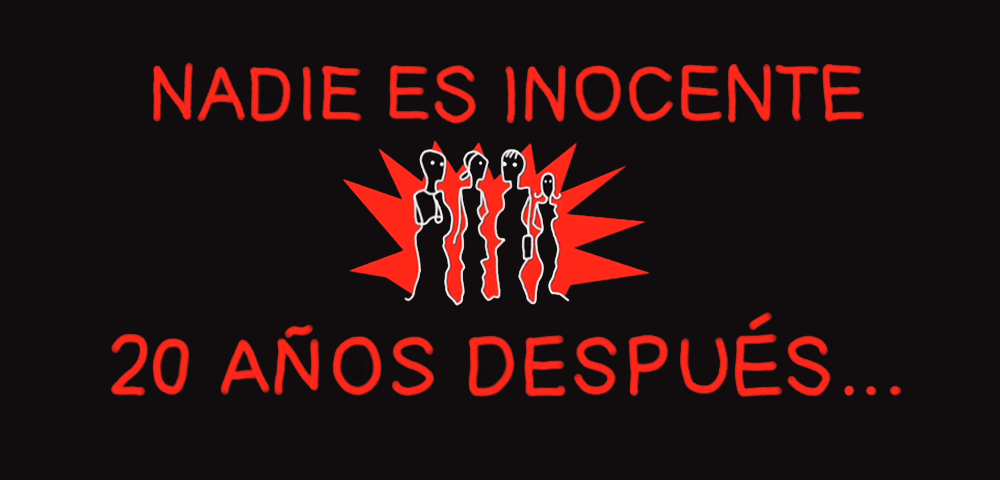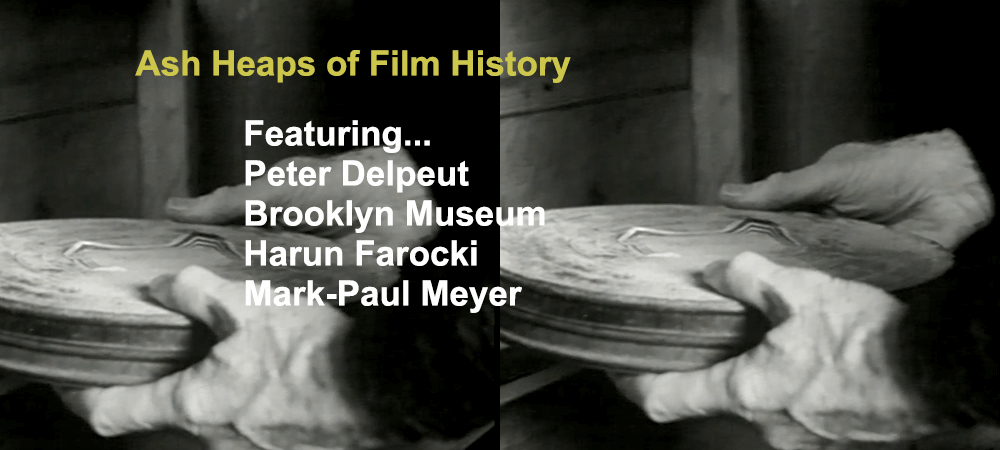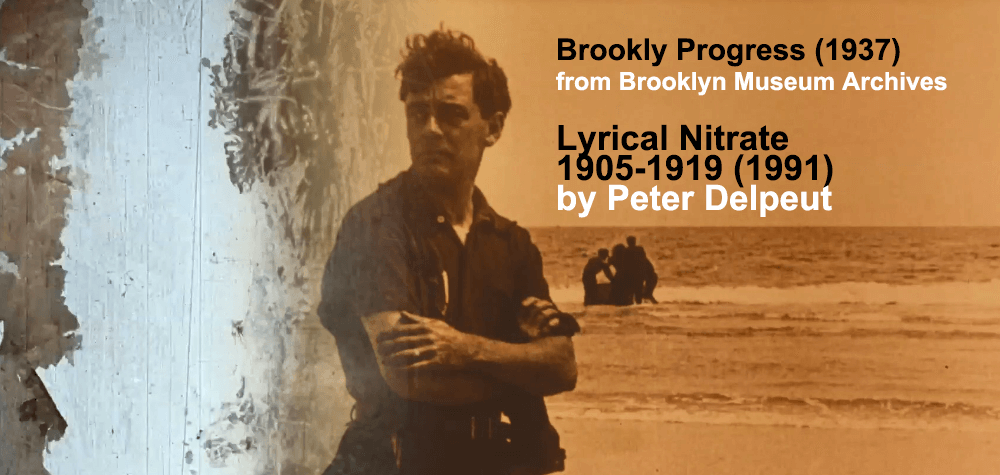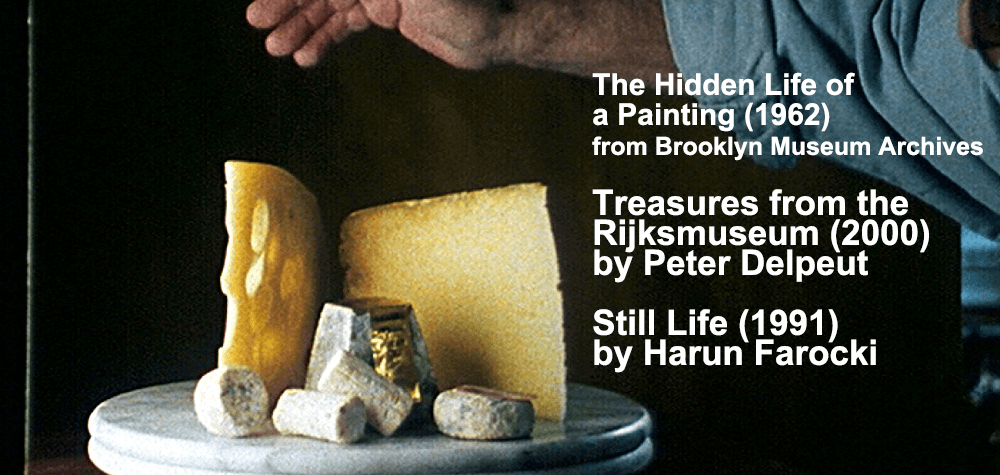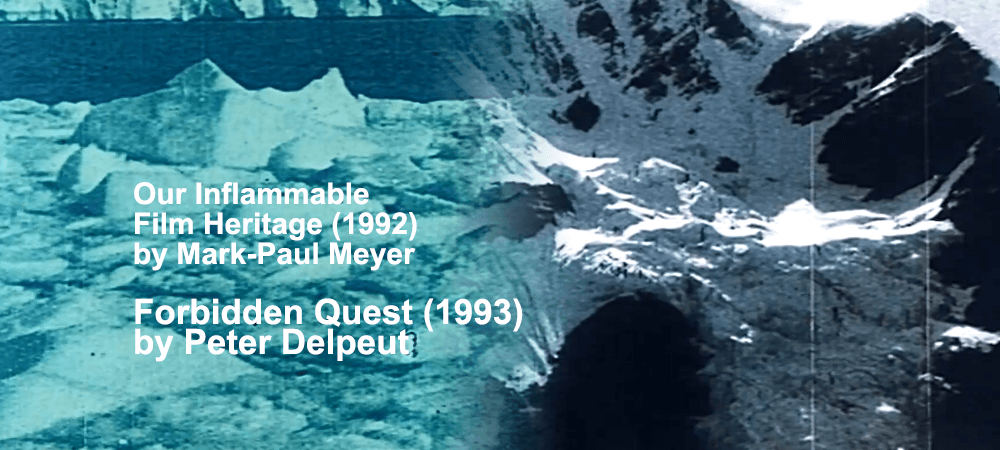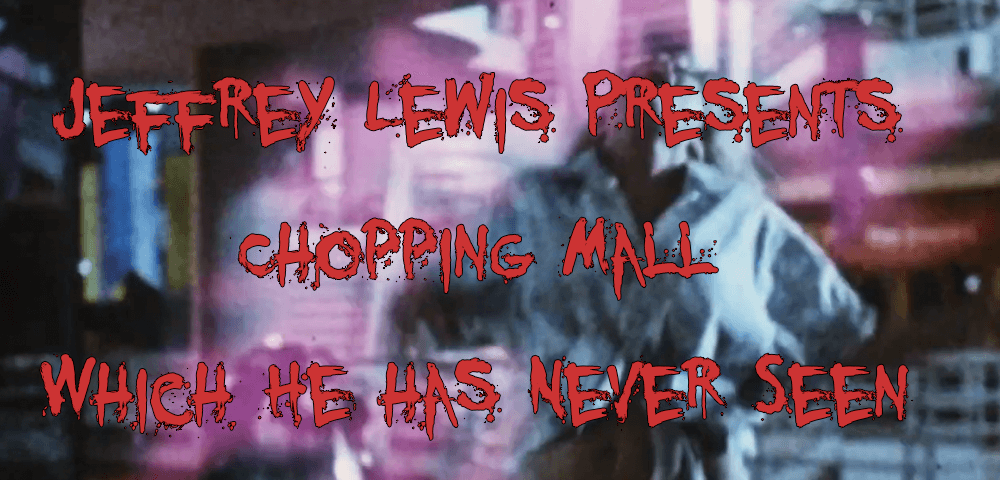
CHOPPING MALL
Dir. Jim Wynorski 1986
USA 77 minutes.
A group of young shopping mall employees stay behind for a late night party in one of the stores. When the mall goes on lock-down before they can get out, the robot security system malfunctions, and goes on a killing spree.
ONE NIGHT ONLY!
FRIDAY, OCTOBER 1ST – 10:00pm
(This screening is $10)
GET YOUR TICKETS!
Join us for a night of music, movies and mixed media with antifolk legend Jeffrey Lewis.
Lewis will perform a short acoustic set and then present the film Chopping Mall which he has never seen! After the film he will take questions from the audience.
About Jeffrey Lewis: Jeffrey Lewis and his various bandmates have perfected a scuzzy, urban style of indie-folk, developing from late-90s New York City bedroom tapes into a mighty 21st Century mash-up of folksy spiel and artsy garage, like Pete Seeger meeting Sonic Youth. A born and raised denizen of the Lower East Side, Lewis’s home recordings were discovered by Rough Trade Records in 2001 (famed label of The Smiths, The Strokes, Belle & Sebastian and more) while Lewis was briefly living in Austin, Texas. Since the 2001 release of his first official album “The Last Time I Did Acid I Went Insane and Other Favorites” on Rough Trade Records, Lewis has toured the world and released numerous acclaimed albums on Rough Trade and other labels. He’s built a worldwide fanbase while regularly changing band names, most recently recording as Jeffrey Lewis & The Voltage for Don Giovanni Records and Moshi Moshi Records.
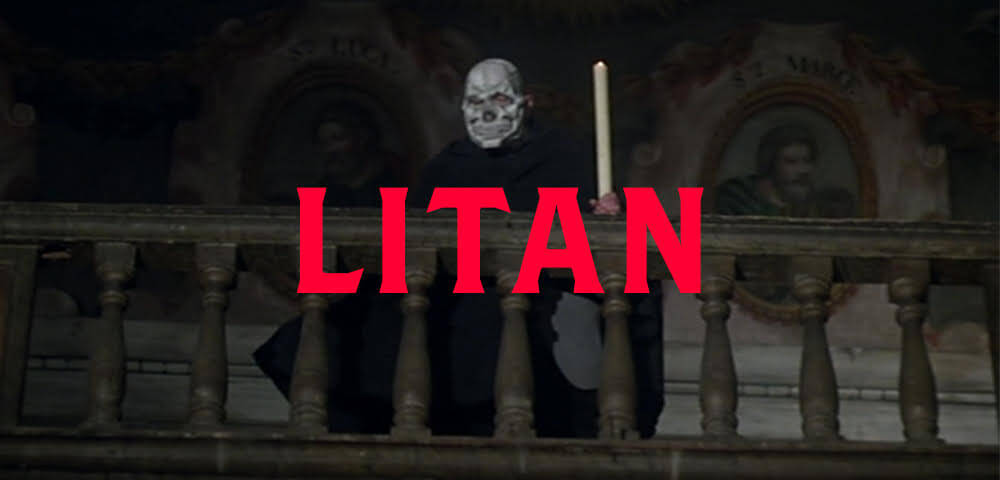
LITAN
dir. Jean-Pierre Mocky, 1982
87 mins. France.
In French with English subtitles.
Sunday, October 3 – 7:30pm
Saturday, October 23 – 10pm
Friday, October 29 – 10pm
GET YOUR TICKETS!
STREAMING AT STREAM.SPECTACLETHEATER.COM
Tuesday, October 5 – 7:30pm
Nora and Jock arrive in the strange village of Litan during the Festival of the Dead.
Co-written, produced, edited, directed by and starring Jean-Pierre Mocky, Litan loosely follows Nora, who is deeply concerned about her husband, Jock (actual spelling), after she has a nightmare he’s been killed. Soon, townsfolk are wandering around as if hypnotized, and a boy scout drowns in an underground cavern.
The ‘plot’ quickly devolves into a Boschian nightmare, drifting between a mad scientist and a bumbling police chief, among others, but plot is not really the point here, spinning ever further into a foggy dreamworld. Part art-house fever dream, part giallo, and yet entirely its own thing, Litanis as darkly comedic as it is unsettling and grotesque.
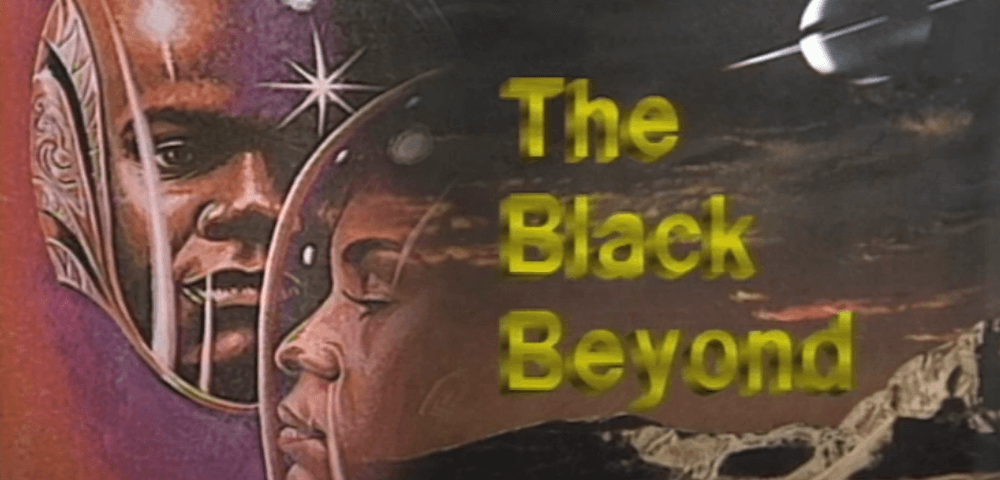
THE BLACK BEYOND TRILOGY
dir. Steven Toriano Berry, 1992
73 mins. United States.
In English.
Thursday, October 7 – 7:30pm
Friday, October 15 – 10:00pm
Saturday, October 23 – 7:00pm w/ filmmaker Q+A (this screening is $10)
GET YOUR TICKETS!
STREAMING AT STREAM.SPECTACLETHEATER.COM
Wednesday, October 13 – 7:30pm
“What really lies beyond this world? A vast void of nothingness? Or a place where the justice and retribution not realized in this life becomes a governing force? Who really knows? When your turn comes, who will be waiting for you?”
Our original plan this Spectober was to invite S. Toriano Berry – a renown independent filmmaker and longtime scholar of African-American cinema – for a special 25th anniversary presentation of his hood classic THE EMBALMER (1996), a surprisingly earnest (and disgusting!) slasher thriller shot on a shoestring budget in Washington, D.C. Bureaucratic matters hindered the screening – for now – But Berry had an irresistible ace up his sleeve: a new digitization of his BLACK BEYOND TRILOGY. Shot on video, THE BLACK BEYOND anthologizes three tales of terror in a style clearly indebted to The Twilight Zone; per Berry’s voiceover introduction, the Black Beyond is a place where “darkness is more than nothingness, and justice is not blind…”
The trilogy consists of three episodes. In “Deathly Realities”, a serial killer hiding behind a rubber mask receives comeuppance from his victims, beyond the grave; in “The Coming of the Saturnites”, a space alien (played by Berry!) struggles to ingratiate himself among humans without blowing his cover; and in “Money’ll Eat You Up!!!” a rogue dollar bill (or “dirty green”) makes its victims disappear – a brutal riposte to Gordon Gekko’s then-popular mantra of “greed is good”. Shot in part as Berry was completing his film production studies at UCLA (and, later, teaching film at Howard), THE BLACK BEYOND combines trenchant social commentary on the African-American experience with lovingly lo-fi videographic and prosthetic effects, as terrifying as it is hilarious. Spectacle is thrilled to include this hidden gem of 1980s phantasmagoria in our annual SPECTOBER program, quite possibly THE BLACK BEYOND‘s first ever public screening in New York City.
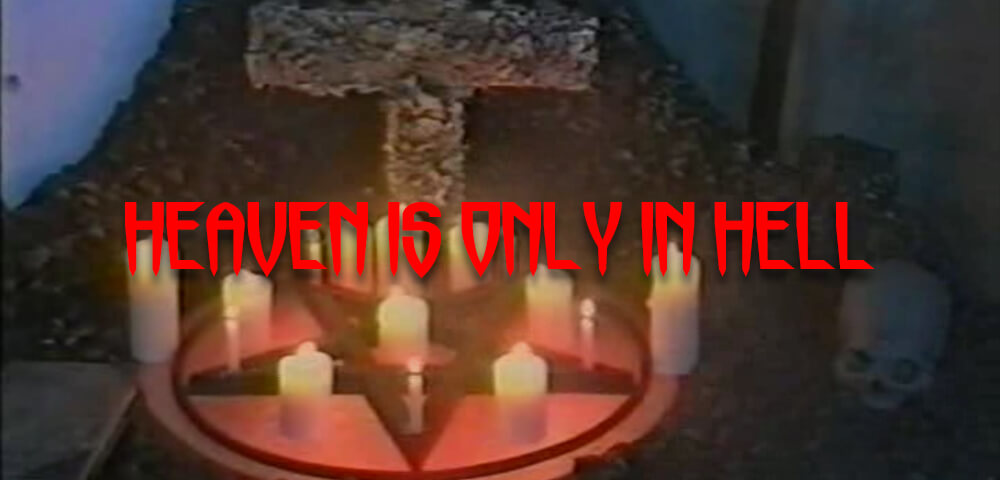
HEAVEN IS ONLY IN HELL
dir. Wim Vink, 1994.
Netherlands, 86 min.
Thursday, October 14 – 10pm
Saturday, October 23 – 5pm
Saturday, October 30 – Midnight
GET YOUR TICKETS!
STREAMING AT STREAM.SPECTACLETHEATER.COM
Wednesday, October 27 – 7:30pm
There is no Heaven. There is Hell. Therefore, Heaven is only in Hell.
Wim Vink’s first and only feature length film, Heaven is Only in Hell is a no budget murderdrone masterpiece. It loosely follows Michael and Sharon (played by Angelique Vink, who also composes the incredible title theme) as their lives are slowly enveloped by a cursed well containing a demonic portal in Michael’s basement. The score is uniformly awesome, and the gore is homemade and sporadic, all tied together by nearly dialogue-free bizarre and hilarious performances. You won’t regret seeing this with a crowd!
This Spectober, Spectacle is proud to bring you some of the finest no-budget splatter filmmaking ever to come out of the Netherlands. Join us for two installments of Vink (plus a bonus long-short by a similarly inclined splatteur from the UK, Michael J Murphy).
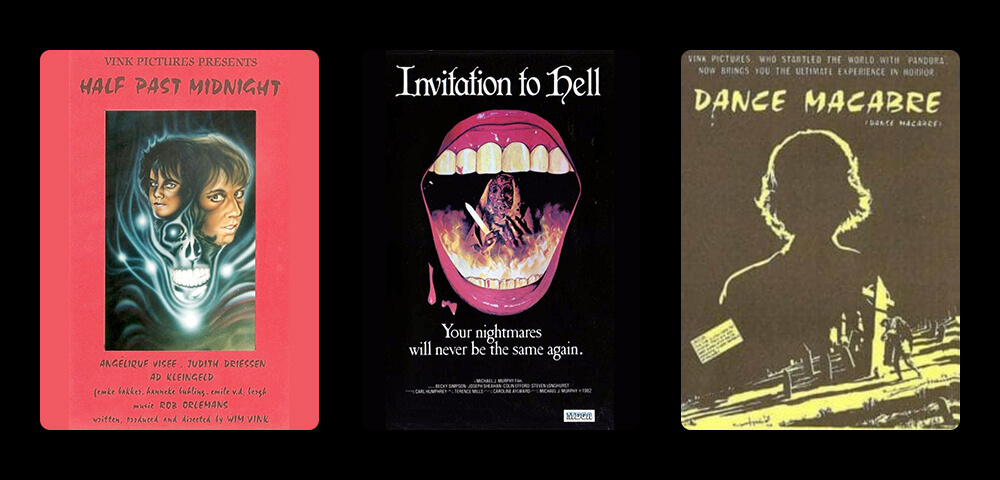
WIM VINK SHORTS BLOCK
Saturday, October 16 – 5pm
Thursday, October 21 – 10pm
Saturday, October 30 – 5pm
GET YOUR TICKETS!
STREAMING AT STREAM.SPECTACLETHEATER.COM
Monday, October 25 – 7:30pm
HALF PAST MIDNIGHT
dir. Wim Vink, 1988.
Netherlands, 35 min.
A short and brutal SOV blast of splatter, Half Past Midnight follows a chronically bullied highschool student as she takes revenge on her classmates after a prank goes too far. Opening with a title card sequence that borderline recaps the short in trailer form, and featuring another absolutely stellar homemade synth score (this time by Rob Orlemans), this is a singular piece of insanity that you don’t want to miss.
dir. Michael J Murphy, 1982.
UK, 42 min.
A young woman attends a high school reunion that turns out to be a cover for a Druid occult ceremony, requiring the blood sacrifice of a virgin. Slightly more coherent than the average Vink (and definitely a lot more dialogue), but the same spirit (and synth) energy runs through this film.
DANCE MACABRE
dir. Wim Vink, 1986.
Netherlands, 22 min.
Vink packs nearly every horror trope and then some into 22 minutes in a brain melting blast of pastiche and loving homage (including bits of score directly lifted from Goblin’s work with Argento and Fabio Frizzi, among others). From blood sacrifices to zombies to possessions, this short really does have it all and then some.
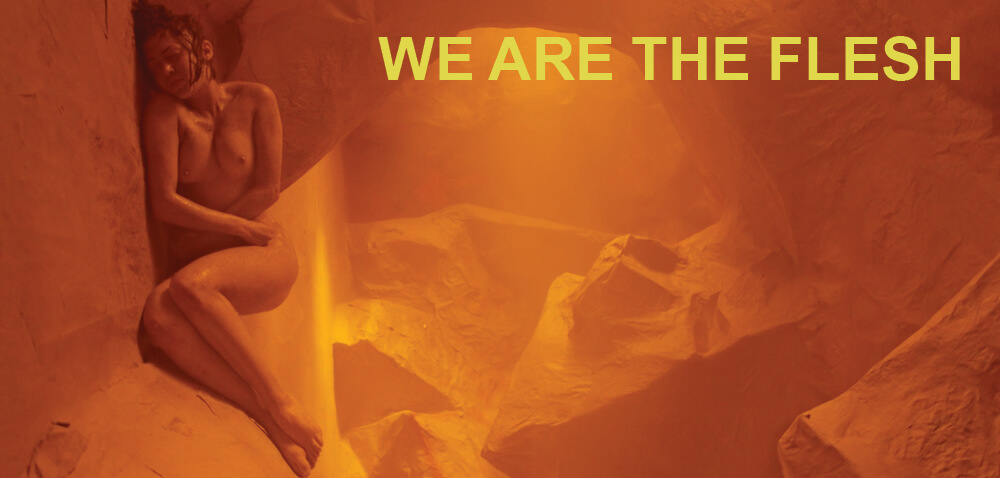
WE ARE THE FLESH (Tenemos la Carne)
dir. Emiliano Rocha Minter, 2016.
Mexico. 76 minutes.
In Spanish with English Subtitles.
Saturday, October 16 – 7pm followed by Zoom Q+A w/ Emiliano Rocha Minter
Saturday, October 23 – Midnight
Saturday, October 30 – 7:30pm
GET YOUR TICKETS!
STREAMING AT STREAM.SPECTACLETHEATER.COM
Tuesday, October 26 – 7:30pm
With special thanks given to Georges Bataille and Antoin Artaud, Emiliano Rocha Mintner’s We Are the Flesh is a hypnotic piece of transgressive cinema whose shocks ring deep. Set in a sort of post-apocalypse of the mind, the film brings three characters together into a horny cycle of violence and Sadean sexual depravity. Stumbling upon middle-aged pervert Mariano (Noe Hernandez) busy cooking up odd gasoline-based narcotics in the dilapidated building where he lives, brother and sister duo Fauna (María Evoli) and Lucio (Diego Gamaliel) quickly become playthings in dangerous games of desire. Incest, murder, patriotic sing-alongs, and abject orgies – the film concocts a potent mixture of taboo subject matter and visual splendor into a primal fever-dream.
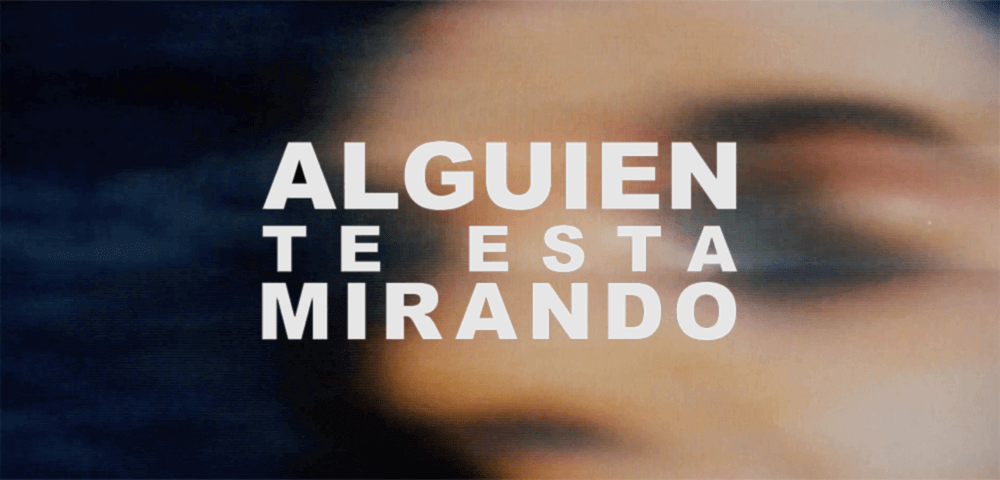
ALGUIEN TE ESTA MIRANDO
(aka SOMEBODY IS WATCHING YOU)
dirs. Horacio Maldonado and Gustavo Cova, 1988
72 mins. Argentina.
In Spanish with English subtitles.
FRIDAY, OCTOBER 1 – 7:30pm
SATURDAY, OCTOBER 16 – 10pm
SUNDAY, OCTOBER 24 – 7:30pm
STREAMING AT STREAM.SPECTACLETHEATER.COM
MONDAY, OCTOBER 4 – 7:30PM
Five students agree to be test subjects for a new American drug that allows people to share dreams. While on a trip to the countryside, they begin to notice strange occurrences happening around them. As they are terrorized by a local gang during their trip, we learn that the countryside trip is a dream they’ve been sharing together. However, one of them is beginning to take things in a much more brutal nature, putting the 5 at risk of dying in their dream and potentially never being able to wake up. Released in the years following the end of the military junta and before the neoliberal policies of Carlos Menem, ALGUIEN TE ESTA MIRANDO is everything classic Argentine cinema isn’t, influenced by slasher films and rock music with a youthful presence, along with a sci-fi twist that evokes future films with simulated reality as a major theme.
This SPECTOBER, Spectacle is thrilled to present ALGUIEN TE ESTA MIRANDO in a gorgeous new 5K restoration courtesy of Gotika releasing. Programmed in collaboration with Anthony Chassi.
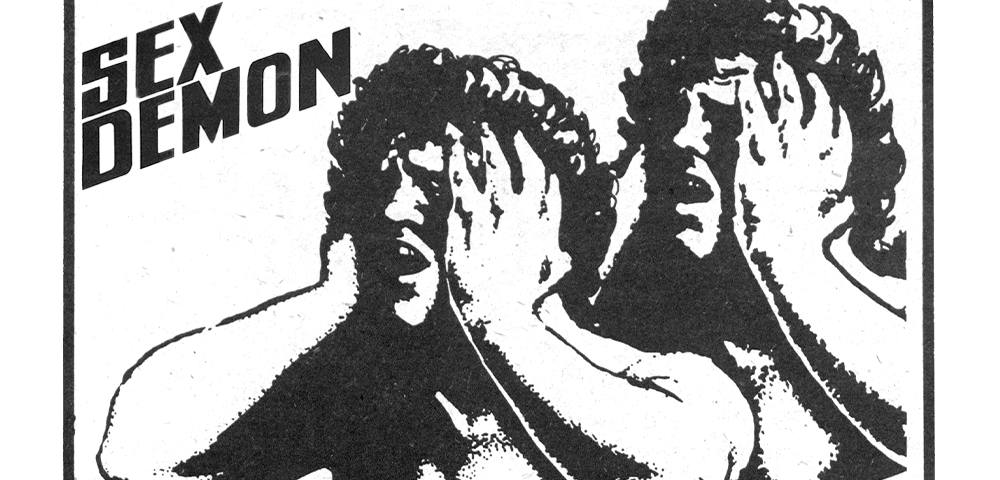
ASK ANY BUDDY presents: SEX DEMON
SEX DEMON
dir. J.C. Cricket, 1975
USA. 60 min.
NEW YORK CITY PREMIERE
Friday, October 29 – 7:30pm
Saturday, October 30 – 10pm
“A non-stop shocker that both sizzles and chills. A totally daring new dimension in male erotica!” – Michael’s Thing
All hell breaks loose when John’s last-minute anniversary gift inadvertently causes his younger lover Jim to become possessed by a SEX DEMON in J.C. Cricket’s all-male horror film. Openly inspired by both The Exorcist and its Blaxploitation cousin, Abby, SEX DEMON is a ferocious mix of the erotic and the grotesque that’s primed and ready to shock audiences again after being lost for the past forty years. In the words of Gay Scene critic Bruce King, “the squeamish may not want to watch, but if you do, you won’t forget it!”
SEX DEMON was the first film effort by actor, erotic dancer, and gay television pioneer J.C. Cricket. After the release of this film, he’d go on to direct over a dozen more under various pseudonyms before cofounding and directing the gay public-access programs Christopher Street After Dark, Diversions, Connections, and Gay Morning America. Cricket passed away from AIDS-related complications in 1992.
Last screened theatrically in 1981 and never given a home video release, SEX DEMON is a crucial — yet long-lost — piece of queer horror history. Presented in a new 2k preservation from a recently discovered 16mm theatrical print.
Evan Purchell is a queer film historian and archivist. His Instagram project,
Ask Any Buddy, explores the gay adult film industry’s role in both the development of queer cinema and the spread of gay culture at large.
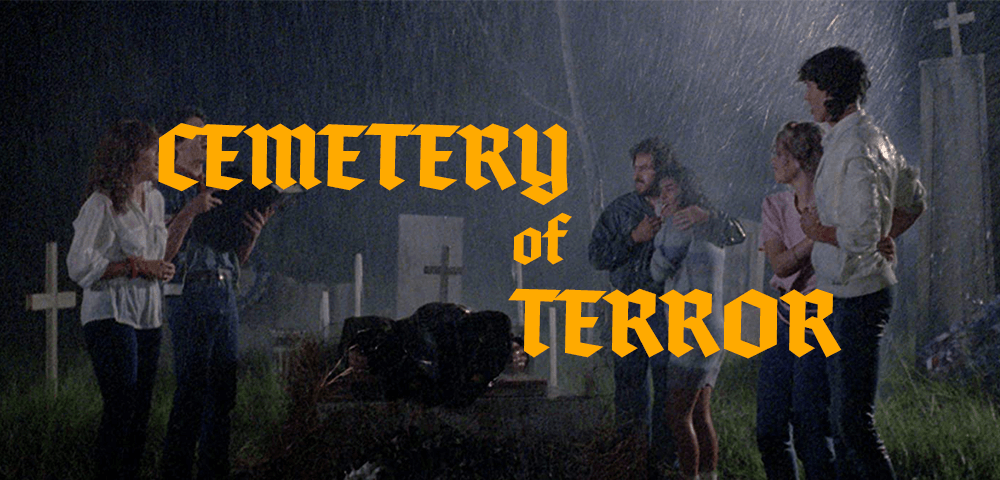
CEMETERY OF TERROR
dir. Rubén Galindo Jr., 1985.
Mexico, 91 min.
In Spanish w English Subtitles.
Saturday, October 2 – Midnight
Thursday, October 7 – 7:30pm
Sunday, October 31 – 7:30pm
GET YOUR TICKETS!
STREAMING AT STREAM.SPECTACLETHEATER.COM
Wednesday, October 6 – 7:30pm
“A fast-paced, no-questions-asked, gutter-level slasher/zombie romp with every ingredient (mis)placed for maximum pleasure.” — Joseph A. Ziemba, BLEEDING SKULL!
The directing debut of Rubén Galindo Jr. (DON’T PANIC, GRAVE ROBBERS), CEMETERY OF TERROR is easily the wildest zombie movie to ever emerge from Mexico. On Halloween night, a group of bored teenagers steal a corpse from the morgue and take it to a nearby cemetery. Once there, they perform a Satanic ritual in an attempt to bring it back to life. Unfortunately, the kids chose the body of a savage serial killer who has just been shot dead by police. Whoops! The group of fun-seeking youngsters unwittingly revive the undead sadist . . . and only occult expert Dr. Carden (legendary Mexican character actor Hugo Stiglitz) can end the madness! Filled with gratuitous gore effects that would feel right at home in a Fulci film, CEMETERY is non-stop thrills and bloodshed from beginning to end.
Restoration courtesy of Vinegar Syndrome and the American Genre Film Archive.
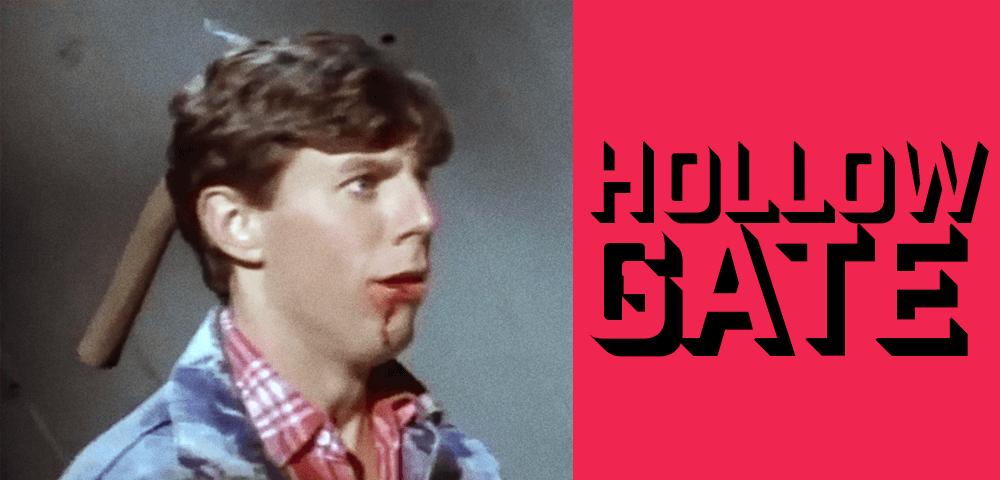
HOLLOW GATE
dir. Ray Di Zazzo, 1988.
USA, 86 min.
English.
Saturday, October 16 – Midnight
Sunday, October 31 – 5pm
Wednesday, October 20 – 7:30pm
“When Mark Walters throws a party, even Freddy and Jason wouldn’t dare to come!” — VHS tagline
“Mad” Mark Walters, in a burst of fury, unleashes his suppressed rage on a community on Halloween night. A night of Halloween fun turns into a night of terror for four innocent teenagers trapped in a malevolent web of horror. One by one, each becomes a victim to Mark’s sinister plans as he dons an appropriate costume to dispatch his prey. In a breathless, heart-stopping climax, one of the terrorized teens turns the tables on Mark . . . or does she? Hollow Gate is an underseen oddball slasher worth another look this Halloween, especially with an audience!
Courtesy of Troma Entertainment and the American Genre Film Archive.
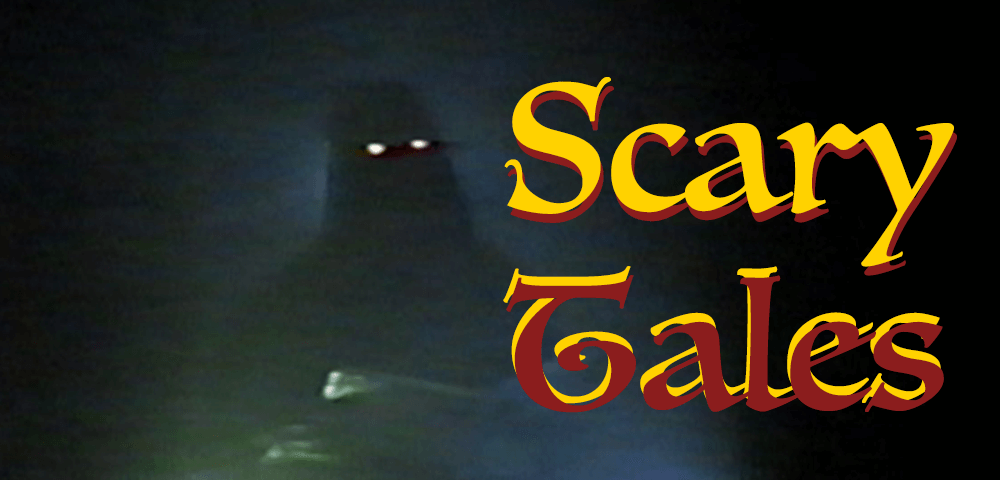
SCARY TALES
dir. Doug Ulrich, 1993.
USA, 70 min.
English.
Friday, October 15 – 10:00pm
Friday, October 22 – Midnight
Friday, October 29 – Midnight
GET YOUR TICKETS!
STREAMING AT STREAM.SPECTACLETHEATER.COM
Wednesday, October 20 – 10pm
“A super charming, homemade, SOV horror anthology with just enough dark overlords and Satanic necklaces.”
— Hollie Horror, Letterboxd
SCARY TALES proves that the films of John Waters and Don Dohler aren’t the only genre miracles from Baltimore. A shot-on-video horror anthology that plays out like a public access version of CREEPSHOW, this is what happens when Satanic necklaces, bloodthirsty slashers, and DUNGEONS & DRAGONS-styled live action role playing collide with cool dads, neon lightbulbs, and dungeon synthesizers.
Spectacle is thrilled to present this charming, gore-filled dreamscape that has been meticulously pieced together from its original S-VHS master tapes.
Preservation courtesy of the American Genre Film Archive.

